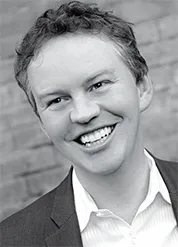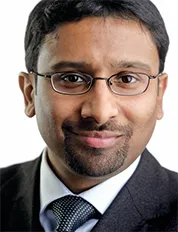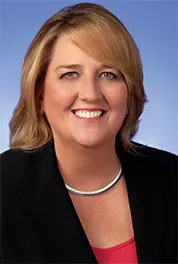Constitutional Decisionmaking: A Signature Chicago Law Experience
In many ways, Professor Geoffrey Stone’s Constitutional Decisionmaking class is a quintessential Chicago Law experience: The class is extremely rigorous and challenging. It is idea based and requires deep thinking about complicated topics under serious deadlines—both for the students and for Stone. It forces students to examine and constantly reconsider their ideas and judgments, and it encourages endless debate. The class is a true example of teaching students how to think like lawyers.
Suffice it to say, it is a lot of work.
Here’s how Stone designed the class to work: 2L and 3L students can apply for admission. Students apply with classmates as a “court,” made up of a group of five “justices.” Stone typically chooses three courts by lot, and each operates independently during the course of the seminar. Usually, about half of the students who apply get a spot.
Every week, each court gets the same two hypothetical cases that Stone created to focus on different aspects of a constitutional issue. In recent years, it has been the Equal Protection Clause, though in the past he has also focused on freedom of speech and freedom of religion.
Each court must carefully consider each case and write its opinions. A court producing just one opinion in a case is very rare; it’s much more common for courts to turn in a majority opinion, a concurring opinion, and a dissenting opinion—and often multiple concurring or dissenting opinions. All this is accomplished within a week, so when the students receive the cases, they must read and analyze them, decide who will write the opinions, circulate drafts and respond to one another’s opinions, and revise and edit opinions very quickly.
Here’s the catch: the students cannot rely upon any real judicial precedents to support their arguments. They approach the first case as it’s the first case ever to interpret the relevant constitutional provision and then create their own body of law over time. Otherwise, Stone said, the research would take all their time, instead of the thinking. And that’s the part he most prizes.
Each court’s decisions build on one another, as the justices must grapple with their own precedents. Students are graded on every opinion they join, without regard to who wrote it, and Stone expects each opinion to respond to the other opinions in each case. By quarter’s end, each court produces a full body of jurisprudence that Stone binds for them in a book that is commonly 200–300 pages, single-spaced.
“The demands on the student are enormous,” Stone said, but the rewards are obvious. The opinions get much better over the course of the quarter, and Stone has to look ever harder for inconsistencies and gaps in logic as the work improves. But he always demands more of the students. “It’s a really great teaching experience for me because I can see how they are learning.”
Stone has offered the class most years since 1973, except for the nine years he spent as University Provost, between 1993 and 2002. Consequently, it is remembered vividly by generations of alumni. Those who took it remember its rigor and rewards, and those who didn’t simply remember its reputation. How Stone teaches the class is a major part of that.
“I remember Geof being very inspiring,” said David Bradford, ’76, a partner and cochair of the Litigation Department at Jenner & Block in Chicago. He said the class was, by far, his favorite during his time at the Law School. “He had a great ability to get people to do their own thinking and to challenge themselves. He challenged people in a very positive way, and he got people to push themselves and the limits of their own capabilities.”
Stone puts it simply: “I want them to come away with a much better understanding of how to think clearly and how to write clearly … It trains them to be rigorous and self-critical thinkers.”
That heavy-duty thinking was sometimes a midweek challenge for the “justices,” said Alexis Bates, ’12, an associate at Skadden, Arps, Slate, Meagher & Flom. She took the class last winter.
“All the cases were right on the line. There were no easy cases,” she said. And sometimes, justices choose a side, and then, “as you’re thinking through and writing out that opinion, you end up talking yourself out of it and thinking it should go the other way altogether.” At least one time, one of her fellow justices changed opinions midweek, and the dissent became the majority, she said.
Bradford said the class was great training for his clerkship and later practice because it taught him how to be persuasive. “It helped us all appreciate how difficult judging could be and what type of advocacy or principles might be most appealing to a judge who’s concerned about precedential effect and the limits of their own roles as judges,” Bradford said.
As for the rigor, he has positive memories. “It was so much fun,” he said. “It was the kind of hard work you became so immersed in, and cared so much about, that it never felt like work.”
Bradford was one of the first students to take the class, the idea for which came to Stone when he joined the faculty in 1973. Stone, a member of the class of 1971, remembered critiquing many judicial opinions as a law student. He often wondered why it seemed so difficult for judges to write decent opinions.
He got his answer soon after graduation, when he clerked for Judge J. Skelly Wright in the U.S. Court of Appeals for the District of Columbia Circuit and for Justice William J. Brennan Jr. of the Supreme Court. Then, when he actually had the chance to write drafts of opinions, he saw how challenging it was, he said. One of the most difficult things was making sure the opinion reflected both the viewpoint of his judge and the other judges on the opinion; he had to strike a balance between what his boss considered the ideal argument and what the other judges would agree with.
“There are usually no definitively right answers to hard questions, and even if you do your best, there will be arguments to make on the other side. It’s easy to poke holes,” he said. “I wanted to give students that experience.” More than anything, he said, the class is “a device for enabling students to work together in a complicated and stressful situation, which is what law practice is like.”
Stone’s students say his teaching style is to be always available to talk about ideas, but to let the courts figure out their own issues. “Especially in the early weeks, figuring out what sort of court you are and how you’re going to approach issues and different styles involves a lot of gnashing of teeth,” said Josh Mahoney, ’13, who took the course last year. “Professor Stone encourages that, that it should be difficult, especially at the beginning.”
His court had a lot of “false starts,” Mahoney said, but eventually found their way. “If you’re stuck, Professor Stone gives you ways to think about an issue. Mostly he’s a lighthouse, so to speak, but you and your group still have to try not to crash the boat into the rocks.”
The class meets once at the beginning of the quarter, and then everything is done outside of class: The courts figure out when and how to meet within themselves, and they communicate with Stone through emails and in face-to-face appointments and office drop-ins. At the end of the quarter, Stone has the students over to his house to talk about the course. He also hands out statistics on how the present-day courts voted on cases as opposed to students from decades past. He changes one or two cases a year, but many have been around for a long time.
The results are very interesting. For example, Edison v. Eberhart asks whether the East Lansing, Michigan, school board may limit participation in school board elections to citizens with children attending or soon-to-be attending the schools in the district. Between 1974 and 1992, 74 percent of judges found that unconstitutional. From 2003 to 2012, only 46 percent found it unconstitutional.
“I would guess this is because there was a significant change in Equal Protection doctrine in the real Supreme Court over time that downplayed fundamental rights jurisprudence under the Equal Protection Clause,” Stone said. “As a consequence, I think students, reflecting in part what they learned in their courses, also became less certain about the merits of that branch of the Equal Protection doctrine. They were therefore more likely to uphold the law in Edison than were students in the earlier generation.”
A change over time is also seen in Gold v. Georgia State University, where a female student argues that gender separation in dormitories violates the Equal Protection Clause. Before 1992, only 30 percent of justices agreed. In the 20 years after, that number rose to 52 percent of justices.
“In the earlier era the idea of same-sex dorms was still pretty foreign to them. They simply didn’t yet exist in most colleges and universities,” Stone said. “By the time of the later set of decisions, many of the students had experienced same-sex dorms and didn’t see the idea of such an arrangement as particularly untoward or problematic.”
The longevity of the course is part of what Stone finds so satisfying. “I find it very rewarding from an educational standpoint,” he said. “I can see, and students tell me, and alumni tell me 25 years later, how valuable it was.”
Bradford, one of those early takers, didn’t know the class was still offered. “I’m delighted to hear that,” he said.
“Generations have benefited from that class. I’d be surprised if it wasn’t on a top-classes list for a lot of graduates of the Law School.”
| CONSTITUTIONAL DECISIONMAKING WITH GEOFFREY STONE | |||
| Equal Protection Hypothetical Cases Comparative Results 1974-1992 and 2003-2012* Percent of justices voting to hold law unconstitutional |
|||
| Case | Issue | 1974-1992 | 2003-2012 |
| Alexander v. Alabama | Possibly corrupt economic classification | 73% | 59% |
| Barker v. Boston | Simply economic classification | 9% | 8% |
| Dillworth v. Damforth | Discrimination against African-Americans | 98% | 99% |
| Edison v. Eberhart | Inequality in voting | 74% | 46% |
| Fellers v. Fellers | Discrimination against women | 87% | 93% |
| Gold v. Georgia State University | Sex-segregated dorms in public university | 30% | 52% |
| Holloway v. Harmon | Welfare/right to travel | 52% | 32% |
| Kent v. Kansas State University | Affirmative action in public university | 47% | 50% |
| *note: Between 1992 and 2003, Geof Stone was University Provost and did not teach the class | |||


